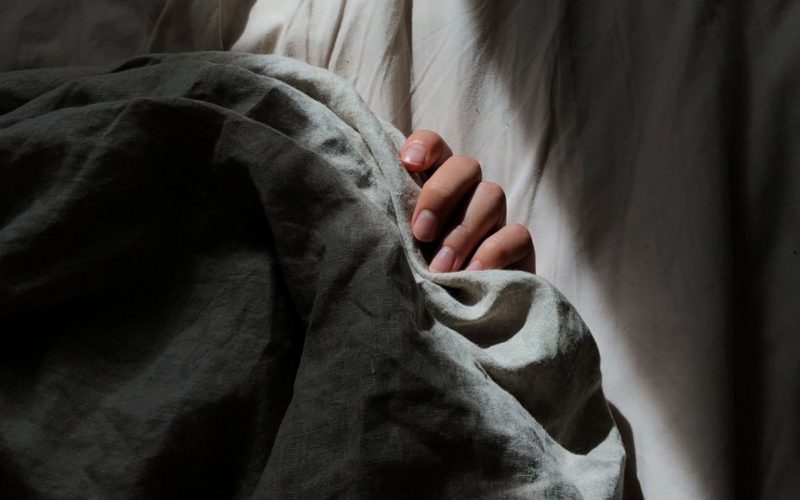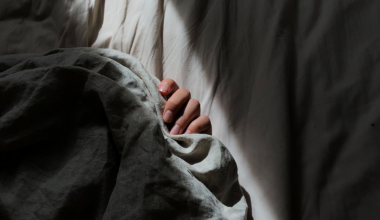Have you ever found yourself coming out of a dream, unable to move or speak no matter how much you tried? You may have been experiencing sleep paralysis.
This phenomenon occurs when a person starts to wake up and experiences a temporary loss of muscle function, typically during transitions into and out of REM sleep. While the condition is not dangerous, sleep paralysis can be terrifying if you suffer from it, especially if you find yourself awake in the darkness of night, completely paralyzed and unable to speak or fully open your eyes.
What is Sleep Paralysis?
Recurrent isolated sleep paralysis is a parasomnia occurring when undesired events happen during sleep. When a person experiences sleep paralysis, they are unable to move their body when falling asleep or when waking from sleep. In normal circumstances, your brain signals your muscles to relax and remain static while you sleep, but during episodes of sleep paralysis your muscles remain immobile, even once you are awake.
Sleep paralysis can also be a sign of a different type of sleep disorder, narcolepsy. Narcolepsy is a chronic sleep disorder that causes overwhelming drowsiness and can result in a person suddenly falling asleep multiple times a day. It is important to note that many people who do not have narcolepsy can still experience sleep paralysis, but in some cases, there is a connection between the two conditions.
Why is Sleep Paralysis So Scary?
It can be incredibly scary to find yourself unable to move during a sleep paralysis episode, and it is common to feel anxious and afraid.
The most frightening aspect of sleep paralysis is typically the fact that you are “awake” for a few moments or a few minutes — which can seem like an eternity —while your body transitions into a state of full wakefulness. You might imagine this brief period of lucidity as your brain moving faster than your body. During a “normal” sleep-cycle your brain and body awake simultaneously and almost instantly. When this doesn’t occur, and you are awake, but unable to move your body, the resulting anxiety levels can rise precipitously. It may feel as if you’ve lost control, even as your body is functioning as it should, though slightly delayed. This anxiety can be heightened by the occasional accompanying hallucination or dream-like visions during these episodes.
Despite the fear and anxiety that sleep paralysis induces, you should still be able to breathe normally and are not in immediate danger. These episodes may occur just once or throughout your lifetime.
What are the Signs and Symptoms of Sleep Paralysis?
The most common indicator of sleep paralysis is a person’s inability to move or speak during an episode from anywhere between a few seconds to about two minutes. While sleep paralysis is not a medical emergency and does not put you in danger, understanding the signs and symptoms of sleep paralysis can help demystify the experience.
Common symptoms include:
- Inability to move arms, legs, body, and head when falling asleep or waking up.
- Sensation of something pushing you down.
- Feeling like someone or something is in the room.
- Being frightened and fearful.
- Hallucinations that can occur during, before, or after sleep (in rarer cases).
Episodes of sleep paralysis are typically short and generally end on their own or when another person touches or moves you. In the moment, you may be aware that you are experiencing sleep paralysis, and in some cases, you might even be able to remember the details of the experience once the episode is over.
What is a “sleep paralysis demon?”
Some who experience sleep paralysis speak of a “demon” or “presence” in their room, which is a typical audio or visual hallucinatory symptom. The term “sleep paralysis demon” may refer to the feeling of a weight on the chest, but also harkens back to the folkloric traditions of the succubus or incubus — thought to seduce the sleeper into sexual activity — but these notions are now easily explained by more advanced sleep science research. Reports of alien “abductions” and other paranormal phenomena have also been attributed to sleep paralysis.
However momentarily frightening your experience, it is important to remember that sleep paralysis is harmless and does not put you in any real danger.
Who’s at Risk for Sleep Paralysis?
Sleep paralysis is fairly common and can impact men and women of any age. According to the American Academy of Sleep Medicine, individuals suffering from sleep paralysis typically start experiencing the condition between the ages of 14 and 17, and while the estimates vary, researchers believe anywhere between 5 and 40 percent of the population experience it.
You may be more likely to have sleep paralysis if you meet some or all of the following criteria:
- A relative has had sleep paralysis.
- Sustained lack of sleep or ongoing insomnia.
- A sleep schedule that often changes.
- Prolonged mental stress and/or anxiety.
- Post-traumatic stress disorder (PTSD).
- Sleeping on your back.
- The use of certain medications.
- Diagnosed bipolar disorder.
- Sleep-related leg cramps.
- Narcolepsy.
How is Sleep Paralysis Diagnosed and Treated?
Because it is fairly common and generally does not impact your overall health, recurrent sleep paralysis does not require a formal diagnosis.
Consider talking with your doctor or a licensed therapist if your experience with sleep paralysis is making you anxious, keeping you up at night, or making you feel exhausted during the day. When speaking with your doctor or a sleep specialist, you can expect to be asked about when these episodes started, how often they occur and the duration of each episode, as well as any past or present drug and medication use.
When it comes to treating sleep paralysis, a doctor will aim to address the underlying causes. If sleep deprivation is triggering these episodes, try getting at least six to eight hours of sleep each night. If underlying psychiatric issues or narcolepsy is a factor, it will likely require treatment with medication overseen by a doctor. Meet with an in-person or online psychiatrist to discuss your treatment options. In many cases, lifestyle changes such as reducing underlying stress is something that therapy can help address.
It is important to remember symptoms of sleep paralysis typically resolve within a few minutes and are not physically harmful. While the inability to move your body when falling asleep or when waking up from sleep is frightening and unsettling, sleep paralysis typically does not require treatment unless symptoms interfere with your day-to-day life. This common issue impacts people of all ages and can happen just once or many times a year. If you do experience sleep paralysis, try to remember that you are not in immediate danger and that it will indeed pass.
Talkspace articles are written by experienced mental health-wellness contributors; they are grounded in scientific research and evidence-based practices. Articles are extensively reviewed by our team of clinical experts (therapists and psychiatrists of various specialties) to ensure content is accurate and on par with current industry standards.
Our goal at Talkspace is to provide the most up-to-date, valuable, and objective information on mental health-related topics in order to help readers make informed decisions.
Articles contain trusted third-party sources that are either directly linked to in the text or listed at the bottom to take readers directly to the source.




